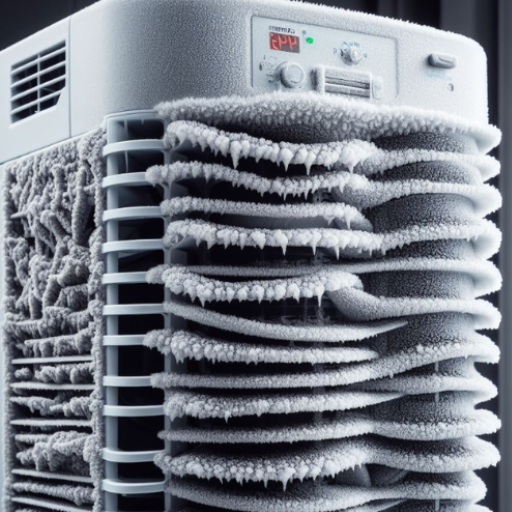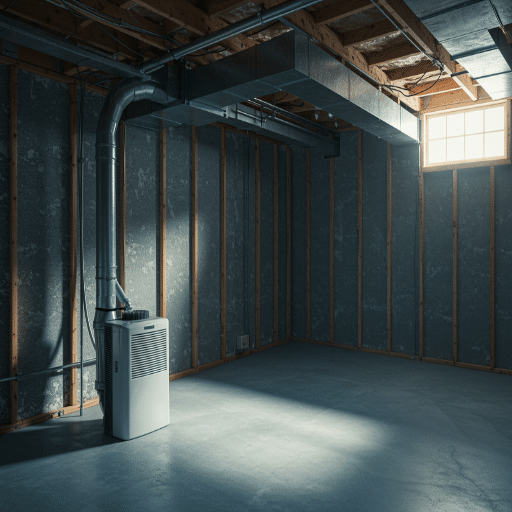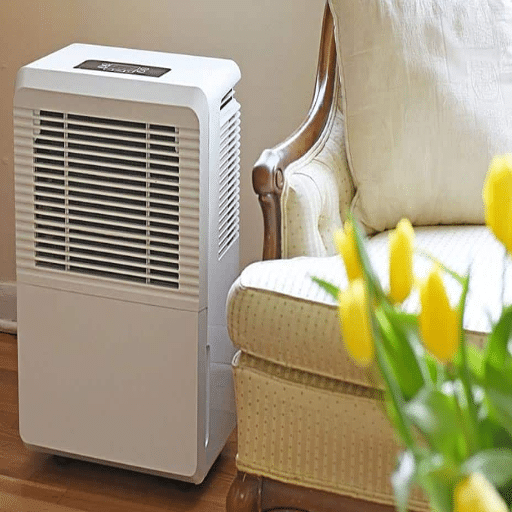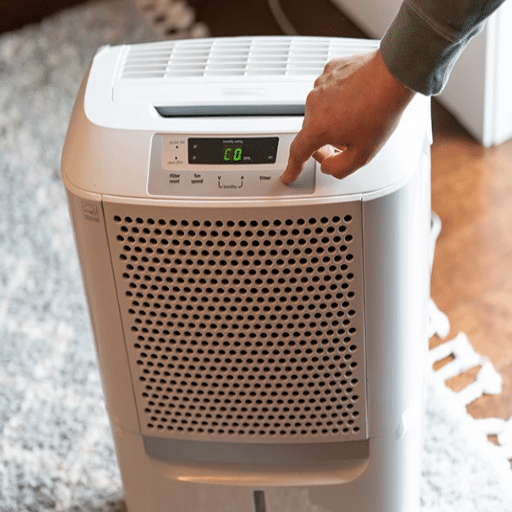When a dehumidifier is functioning properly, it plays a critical role in regulating indoor humidity levels, preventing issues like mold growth and excess moisture. However, encountering ice buildup on your dehumidifier can be both alarming and inconvenient, as it not only hinders the efficiency of the appliance but may also signal underlying problems. This article aims to provide a comprehensive understanding of why dehumidifiers develop ice buildup, the factors contributing to this issue, and practical troubleshooting techniques to address it. Whether you’re a homeowner trying to resolve a recurring problem or simply seeking to maintain optimal performance of your dehumidifier, this guide will equip you with the knowledge needed to resolve and prevent icing effectively.
What is a Dehumidifier and How Does It Function?
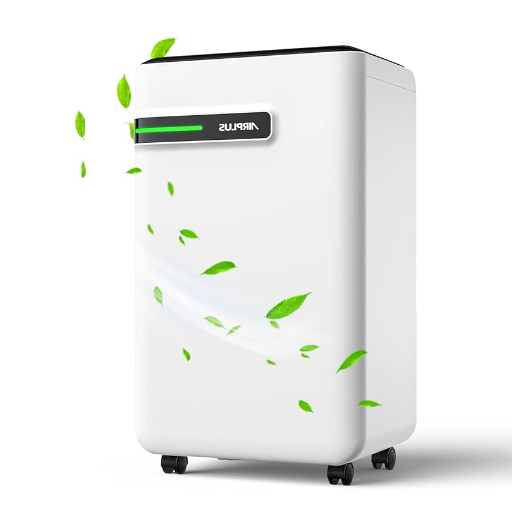
Definition and Purpose of a Dehumidifier
A dehumidifier is a device that decreases an oversupply of moisture in the air; thereby, it contributes to a comfortable and sanitary state inside a house. It plucks out moisture, thereby preventing mold growth, condensation, and allergen proliferation like that of dust mites. These dehumidifying units work best under humid conditions, in basements, or anywhere else where such dampness exists.
A dehumidifier functions by drawing air laden with moisture into the instrument, cooling the air to condense the water vapor, and collecting the condensation in a reservoir or draining it away through a hose. Dry air is then reheated and released back into the room. This process repeats until the desired humidity level sits somewhere between 30% and 50%.
An optimum humidity level promoted by the dehumidifier increases air quality and provides structural preservation while protecting stored items from moisture-related damage. Besides, they improve the energy efficiency of a cooling system, as it takes less effort to cool dry air. These factors thus make dehumidifiers a scientific recipe for comfort and property preservation.
How Dehumidifiers Remove Moisture from the Air
When a dehumidifier takes out moisture in the air, it draws in humid air, cools it down, and collects the condensation generated. A fan draws air into the unit. The air cools as it passes over refrigerated coils. When cooled air cannot hold moisture, water vapor glistens on the coils in droplets.
Depending on whether it empties or stores the condensed water, it may collect in a reservoir or may be drained through a hose. Simultaneously, the dry air is heated by a heating element and released into the room again to continue the moisture removal process. This efficient operation creates consistent humidity levels indoors.
They usually run with humidity sensors measuring the air’s condition and adjusting the system accordingly. This ensures efficient operation and prevents over-dehumidification that creates excessively dry indoors. With this process, dehumidifiers hold a tight grip over air moisture, turning indoor spaces healthier and more comfortable.
Understanding the Role of Coils in Dehumidification
The coils are the actual components in the mechanism of the dehumidifier responsible for drying moisture. Two coil sets work inside a dehumidifier: the evaporator coil and the condenser coil. Firstly, the evaporator coils chill the air, thus turning its water into a liquid, which is collected in a tray or drained away. This step of chilling the air is the most vital aspect of dehumidifying air because it is the way that the device extracts excess moisture from the air into the atmosphere.
Once the water is taken out, the condenser coils provide heating to the air so that the air can be let loose into the indoor environment at comfortable temperature levels. Without reheating air by condenser coils, the air would leave too cold, which would create discomfort and imbalance in the indoor environment. These two coils, evaporator and condenser, are said to complete a cycle, which results in enhanced indoor quality and presents the qualifying factor from the perspective of indoor air humidity.
How well the actual coils are designed and built directly influences the overall performance of the dehumidifier. Their capability of extracting moisture depends on such things as their conductive materials, their upkeep, and the general design of the system. Incompetent or badly kept coils will reduce performance, increase energy use, and thereby worsen moisture control. Consequently, frequent cleaning and looking into these coils would work better for long-term performance and comfort indoors.
Why Does Ice Form on a Dehumidifier?
Common Causes of Ice Buildup
Ice forms on a dehumidifier when certain environmental or mechanical conditions prohibit it from functioning normally. This usually happens in the presence of low ambient temperature. Practically, dehumidifiers are meant to work efficiently within some temperature range, typically 65°F to 85°F. When the ambient temperature falls below this, the air with moisture, drifting over the evaporator coils, might freeze due to decreased heat exchange efficiency.
The other common causes of this phenomenon can be air flow restrictions. Blocked or dirty air filters, obstructed vents for intake, and item obstruction all reduce the circulation of air over the coils, which causes coercive uneven cooling and subsequent ice buildup. Regular cleaning of air filters and ensuring smooth passing of air help solve this problem.
Issues with component failures can also prevent the dehumidifier from regulating its working cycles properly. In such cases, the cooling operation goes on for unduly long periods, which just precipitates icing of the coils. Then again, refrigerant could be low within the system so that it cannot maintain proper temperature gradients that would, in turn, increase the risk of ice formation.
In the presence of high relative humidity paired with poor drainage, ice formation becomes a crucial concern. The equally moisture-laden system components are essentially ready with a drop in temperature around the coil surface to midway to freezing. Correcting these downgrade states through scheduled checks and verification for adherence to the manufacturer’s guidelines will keep the dehumidifier working and free of ice and thus extend the life of the unit.
The Impact of Low Ambient Temperatures
Low temperatures can surely compromise the working and efficiency of any dehumidifier. Whenever the temperatures fall below the recommended operating range, the unit is compromised in its performance and reliability. The following are five detailed impacts of low ambient temperatures on dehumidifiers:
- Lower Efficiency of the Refrigerant System: Through cooling internal air processes, a dehumidifier extracts moisture from the air. The refrigerant, when chilled by low outside temperatures, cannot properly heat and ends up losing efficiency in its overall working, in contrast to the actual aim, and slows down insofar as the extraction of moisture goes; thereby, it sits drawing extra units of electricity.
- Frost or Ice Formation on Coils: During prolonged low ambient temperature conditions, the condenser and evaporator coils fall below the dew point, which causes frost or ice formation, consequently obstructing the airflow and reducing the efficiency of the dehumidifier.
- Compressor Stress and Failure: The compressor, a very important part of the refrigeration cycle, is stressed in a low-temperature environment. Such an excessive load of stress can, over a period, cause mechanical wear and tear, leading to poor performance and later, complete failure.
- Limited Extraction of Moisture: The lower the ambient temperature, the less capacity of the air to hold moisture. Therefore, the capacity of a dryer to take moisture out of the air significantly reduces with lower temperatures, thus rendering it almost useless in cold circumstances or poorly insulated spaces.
- Operational Shutdown or Protection Mechanisms: Numerous modern dehumidifiers have temperature sensors and safety mechanisms to shut down the unit when temperatures fall below a threshold deemed safe. While this prevents potential damage, it can inhibit the unit from working through prolonged cold spells.
To reduce the effect, make sure you choose dehumidifiers that are rated for low-temperature environments and maintain them well, including defrosting and inspections regularly. Understanding these limitations will assist in the best optimizations for dehumidifier performance in challenging conditions.
Blocked Airflow and Its Effects on Performance
A blocked airflow has major impacts on the efficiency and effectiveness of any moisture extraction. Restricted airflow impedes proper circulation of air through the unit and possibly hinders it from properly maintaining the desired humidity levels. The following are the five effects of blocked airflow on dehumidifier performance in detail:
- Slow Moisture Extraction Rate: A blocked airflow allows less air to pass through the dehumidifier; thus, it cannot extract moisture from the air effectively. The room remains humid for much longer, especially in high-moisture areas.
- Increased Energy Consumption: Because of restricted airflow, the compressor and motor of the dehumidifier work harder to maintain the required humidity level. This results in more energy usage and higher operational costs over a long period.
- Overheating Internal Components
- This condition undercuts the ventilation needed to dissipate heat generated within. Sweating it out under these settings can have the consequence of premature component wear and tear, mainly the compressor or the fan.
- Poor Air Circulation: Blocked airflow impedes air circulation in the room on an even basis. It causes some variations in local humidity, thereby leaving some areas wet while others remain dry, adversely affecting the efficiency of the dehumidifier.
- Mechanical Failures: Operating with restricted airflow for long periods puts strain on the fan motor and other mechanical parts. Over time, the chances of failure increase, thereby shortening the equipment’s working life.
Keeping the air filters clean, placing the dehumidifier in a suitable location, and conducting regular maintenance checks will ensure reduced effects of blocked airflow and hence better performance of the unit.
Troubleshooting a Dehumidifier Covered in Ice
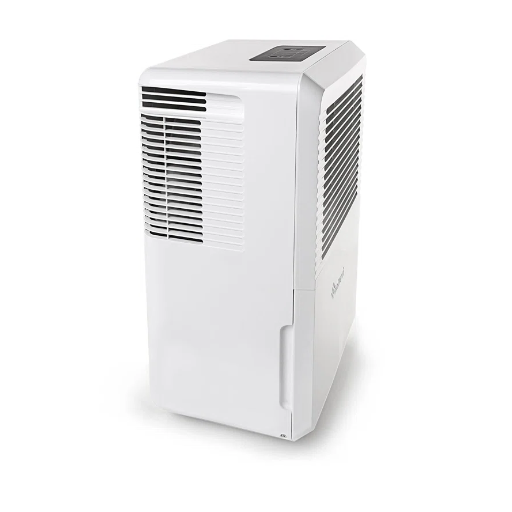
Checking Thermostat Settings
The thermostat is commonly referred to as one of the essential appliances in maintaining the operational efficiency of a dehumidifier, especially where temperatures vary frequently. Begin by setting the thermostat for a correct temperature based on the ambient conditions. Generally, dehumidifiers operate well when the ambient temperature is above 65°F; however, if it drops below this, the risk of ice forming on the coils increases, mainly if the thermostat remains incorrectly calibrated or is deliberately set too low. This would directly inhibit the unit’s capability to remove moisture from the air and add to mechanical stress prematurely.
A key step is verifying the accuracy of the thermostat by comparing it to a calibrated external thermometer. If discrepancies exist, then attempting to recalibrate the thermostat might be warranted, or one may want to search the respective manufacturer’s manual for any instructions on how to set it correctly. These days, building dehumidifiers with an integrated thermostat and ensuring a defrost cycle to keep these from freezing are quite common; however, the whole puzzle stands and falls with the accuracy of those sensors. Cleaning the temperature sensors and making sure that there is nothing blocking them could go a long way in ensuring that the device works well and for a long time.
Complementing such ambience factors are their typical insulation and the location of insults. Defined as placing the dehumidifier within a location of bad insulation, such as basements or garages, would really subject the thermostat to rapid changes in temperatures, making for an inefficient operation. For efficiency and long-term reliability, the dehumidifier would be paired with some form of supplementary heating, or the device relocated to a more temperature-stable ambience to prevent ice from ever forming.
Inspecting and Cleaning Air Filters
Air filters are critical elements for the efficient working of any dehumidifier. They trap dust, allergens, and airborne particles that obstruct air currents or cause damage to their internal components. Regularly inspecting and cleaning these filters is of utmost importance in maintaining the optimum performance of the dehumidifier. Filters should be reviewed at least once every two weeks during heightened periods of use.
First, ensure that the dehumidifier is switched off and unplugged to avoid any inadvertent injury or internal damage during filter inspection. Gently remove the filter following the instructions given in the user manual by the manufacturer. Check for visible dirt, discoloration, or damage. A clogged air filter reduces airflow and forces the appliance to work harder, consuming more energy.
The debris trapped can be vacuumed using a brush-head attachment. Washable filters can be cleaned by rinsing under lukewarm water, ensuring dirt particles are fully removed. Put the filter out to air dry completely before inserting it back in the dehumidifier. Using a wet filter is bad as it encourages microbial growth and hinders performance.
A replacement is warranted whenever the air filter appears worn out, torn, or dirty to a degree that makes effective cleaning impossible. Always prefer those filters offered or recommended by the manufacturer for assured compatibility and efficiency. When air filters are maintained on a regular schedule, air quality is improved, and the dehumidifier unit benefits from increased longevity as well.
Examining the Coils for Damage
The coils in a dehumidifier, usually the evaporator and condenser coils, form essential elements in facilitating the dehumidification of any area. The coils should be consistently checked to ensure the best performance and to identify any anomalies that might cause a failure. The procedure can start with a visual inspection of both coils for any physical damage, like bent fins, corrosion, or anything obstructing airflow, such as dirt.
Corrosion constitutes a significant threat when left unattended; it occurs after undergoing long-term exposure to humid conditions. This exposure eventually causes refrigerant leakage in the system. If there are observed signs of corrosion, it would help if you had a professional assess the damage and see if the system can be repaired or should be replaced. Bent fins will also adversely affect air circulation through the coils; hence, these should be gently straightened with a fin comb created for this very purpose.
Keep the coils clean at all times. Any dirt or dust would block heat exchange. Cleaning ought to be done carefully with a soft brush or with an application of commercial coil cleaner that will not damage the fragile fins. For maximum results and efficiency, the cleaning procedure should be performed fairly regularly, especially in areas with high dust or contaminant levels. By taking care of the coils first, the dehumidifier will work efficiently, helping to lengthen the equipment’s life and to ensure consistency in humidity control.
Preventing Ice Buildup in Your Dehumidifier
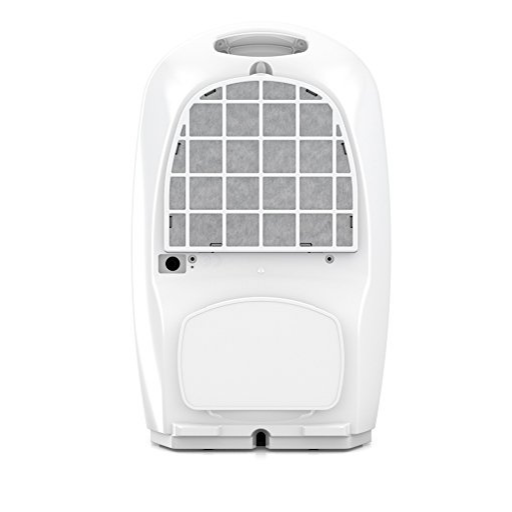
Regular Maintenance Practices
Basic maintenance to prevent ice buildup must be done on the dehumidifier. First, the air filter should be checked and cleaned at least once a month. A clean filter allows free airflow and reduces frost build-up. Also, the ambient temperature must fall within the operating range set by the manufacturer. Most home dehumidifiers work best between 41°F (5°C) and 95°F (35°C). Operating outside this range will either encourage frost accumulation or cause inefficiency.
Next, keep an eye on the evaporator and condenser coils and clean them whenever needed. Dirt, debris, or dust clogged onto the coils will block heat exchange, therefore causing ice buildup. In a workplace setting where the temperature is routinely low, try using a dehumidifier with a built-in defrost or keep the area sufficiently warmed.
Drain maintenance is equally significant. Confirm that the drain line is free from any dirt or something that may prevent water from flowing out, with moisture then freezing. Follow these preventative measures with the most up-to-date practices to greatly reduce the potential for ice-related issues and dehumidifier performance.
Ensuring Proper Room Temperature and Ventilation
Providing a steady room temperature and ventilation is deemed necessary to facilitate the efficient working of the dehumidifier and safeguard it from performance deterioration. Usually, according to the model, a dehumidifier functions pretty well within a stated temperature range, mostly between 65 and 90°F. Away from the considered range, the device could experience a loss of efficiency or, in more extreme instances, mechanical stress. For example, if used in cold conditions, internal condensation might freeze, preventing the unit from performing.
For free ventilation, an open, unobstructed spot is recommended for the device, allowing free flow of air from the intake and exhaust vents. Placing it too close to walls or furniture would restrict the flow of air, thus increasing the workload of the compressor and fan, which could then be detrimental to the longevity of those parts. Also, make certain the room itself is adequately ventilated so that excessively humid air does not accumulate, thus lessening the ability of the dehumidifier to bring down relative humidity levels.
In addition to that, more accurate operations are served by advanced dehumidifier models with climate control sensors and airflow optimization technology. These systems would be adjusting dynamically in response to ambient changes, thereby tuning their performance about present demands. Such refined techniques allow consumers to have control over moisture at all times while ensuring that the dehumidifier equipment holds reliability for longer.
Moving the Dehumidifier to Optimal Locations
To improve the efficiency of the dehumidifier and maintain balanced environmental conditions, the best location for its positioning must be determined for its positioning. Areas that are usually most humid should typically be targeted for the placement since these include the basement, bathroom, laundry room, or any enclosed space prone to condensation. When distributing air to the maximum extent, the dehumidifier must not be obstructed by furniture, walls, or anything else that might serve as an obstruction, with a minimum free space of 6-12 inches all around.
To allow proper drainage, the dehumidifier must be placed on a flat surface, especially if the unit supports gravitational drainage through a hose for continuous water removal operation. Another option to achieve uniform moisture reduction for large spaces or multi-room areas is central placement. Some of the more sophisticated models may be fitted with humidity sensors providing precise readings to aid installation in pinpointing the exact location for maximum moisture extraction.
For continuous optimization, humidity readings obtained from a hygrometer would be good; one can also consider repositioning the dehumidifier to account for changes in environmental dynamics. The synergy between strategic placement and sophisticated moisture monitoring ensures that the dehumidifier performs with utmost efficiency, ensuring that it is cost-effective and has a long life expectancy.
When to Seek Professional Help
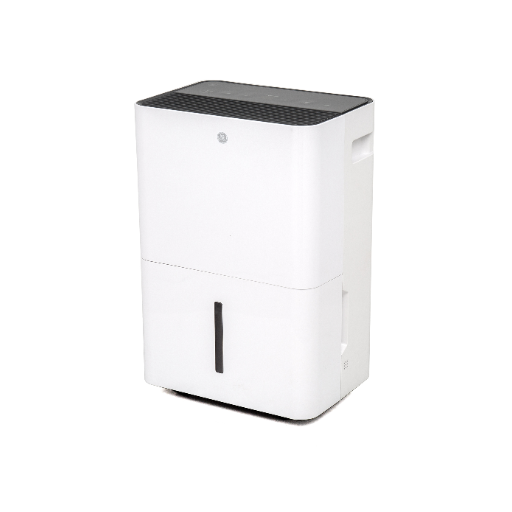
Identifying Persistent Icing Issues
An icing problem persisting on a dehumidifier points to deeper mechanical or environmental challenges that require immediate rectification. This frost formation on the dehumidifier coils can be caused due to insufficient air flow, the room temperature being too low, or some other fault with the refrigeration mechanism. For instance, if the space temperature were to reach even-far-lower than 65°F (18°C), the unit itself might even fail to maintain the desired temperature on the coils, resulting in ice formation. Ensuring conditions under which the unit shall operate fall into specifications as recommended by the manufacturer is the very foundation for addressing this issue. Hence, filters should be cleaned or changed in due periodicity to ensure proper functioning.
Should ice form, still with proper environmental conditions being maintained, then the chances of leaking refrigerant or a malfunctioning compressor would arise. A low amount of refrigerant would directly interfere with the heat exchange process, inhibiting the system’s capability to clear humid air and thereby causing the recurring formation of frost. Likewise, compressor inefficiencies affect the unit’s capacity for proper cycling, thus further forming ice. There is a need for diagnosis of such internal faults by a professional using the proper tools for measuring refrigerant pressure and performance evaluation of critical components.
Never procrastinate on a continuing or aggravating icing problem; such conditions spell lesser efficiency, great power consumption, and eventual damage to your dehumidifier. For resolving such compounded issues, having an expert licensed HVAC technician consult by your side is advised. Identifying the culprit causes may even require techniques, including thermal imaging or pressure testing.
Recognizing Unusual Noises and Malfunctions
Unusual noises from a dehumidifier and irregular operations may signal a problem that requires immediate attention to avoid further damage. Rattling, grinding, or buzzing could be due to loose parts, a damaged motor, or something that obstructs the fan. For example, grinding would be indicative of motor bearing failure, while consistent rattling could be caused by panels not being firmly secured or some debris within the unit.
Still, some malfunctions may not be auditory; those with shortfalls toward symptoms of removal of moisture, however, constant cycling, or on-off pattern shocks may well be pointing at an unsuccessful sensor, a faulty compressor, or a clogged filter. More advanced tests might involve checking electrical continuity across key components like the fan motor and compressor, or an assessment of refrigerant level to spot leaks or depletion.
Operators will observe performance metrics of their dehumidifiers, such as the relative humidity percentage maintained in a given space and their power consumption levels. If a sudden deviation from normal performance occurs, recalibration or even part replacement may thus become necessary. Immediate intervention about unusual noises and malfunctions prevents any possible drop in the efficient functionality, energy wastage, and shortening of the life span of the equipment.
References
-
Icing Mitigation via High-pressure Membrane Dehumidification in an Aircraft Thermal Management
Another detailed analysis on the use of membrane dehumidifiers to address icing issues in high-pressure systems. -
Moisture Problems in the Home
This publication from Michigan State University discusses common household moisture problems and the role of dehumidifiers in preventing issues like window icing. -
The Problem of High Humidity in the Ice Arena and Ways to Solve It
This SpringerLink chapter addresses the tasks of dehumidification systems in ice arenas, focusing on maintaining the ice surface and managing high humidity levels.
Frequently Asked Questions (FAQ)
Q: What should I do if my dehumidifier has ice on it?
A: If your dehumidifier has ice on it, the first step is to turn the unit off and unplug it. Allow the ice to melt completely, which may take several hours. Once the ice has completely melted, check the dehumidifier filter; a dirty filter can be a common cause of dehumidifier icing. Ensure the filter is clean and properly installed before restarting the unit.
Q: Why does my dehumidifier freeze in cold temperatures?
A: A dehumidifier can freeze if it operates in lower temperatures, typically below 65 degrees Fahrenheit. Cold coils can cause condensation to freeze, leading to ice buildup. To prevent your dehumidifier from icing, ensure it is positioned in a space with warmer temperatures and good airflow.
Q: How can I prevent my dehumidifier from icing?
A: To prevent your dehumidifier from icing, maintain a surrounding temperature above 65 degrees Fahrenheit. Ensure that the unit has good airflow and is not blocked by furniture or other objects. Regularly clean the dehumidifier filter to avoid poor airflow, which can lead to freezing.
Q: What is a common cause of dehumidifier icing?
A: A common cause of dehumidifier icing is low temperature combined with high humidity. When the air is humid and the surrounding temperature is cold, condensation can form on the coils, causing them to freeze. Additionally, a dirty filter can restrict airflow, contributing to this issue.
Q: How do I fix a dehumidifier that keeps freezing?
A: To fix a dehumidifier that keeps freezing, first ensure that the temperature of the room is appropriate. Consider repositioning the dehumidifier to a warmer area or adjusting the humidistat settings. Also, check the dehumidifier filter and clean or replace it if necessary to ensure good airflow.
Q: How can I tell if my dehumidifier fan is working properly?
A: If your dehumidifier has ice on it, check if the dehumidifier fan is running. The fan blades should be spinning continuously when the unit is operational. If the fan is not working, this can lead to poor airflow and may cause the coils to freeze. If you notice any issues with the fan, you may need to troubleshoot or replace it.
Q: What happens if the ice on my dehumidifier melts?
A: When the ice on your dehumidifier melts, it should drip into the tank or drain if the unit is functioning correctly. However, if the ice has completely melted and the unit continues to freeze, it may indicate a deeper issue like a dirty filter or insufficient airflow that needs to be addressed.
Q: Should I operate my dehumidifier in fan mode when there is ice?
A: Yes, switching your dehumidifier to fan mode can help circulate warm air around the unit, assisting the ice to melt more quickly. However, if the unit continues to freeze, you should investigate potential causes such as temperature settings or a dirty filter.
Q: How often should I clean the dehumidifier filter?
A: It is recommended to clean the dehumidifier filter every few weeks, especially during high humidity periods. A dirty filter can restrict airflow and lead to freezing, causing your dehumidifier to work less efficiently. Keeping the filter clean can help prevent issues such as ice buildup.

